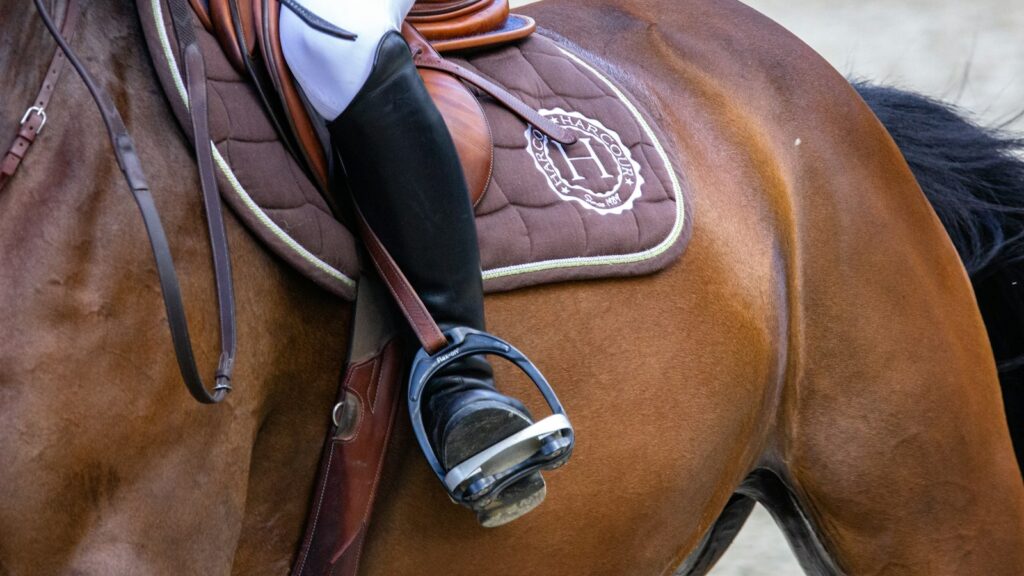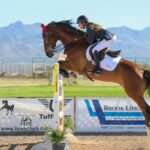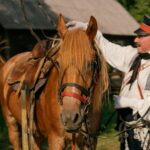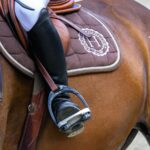Balance is the cornerstone of effective horsemanship. Whether you’re a beginner finding your seat or an experienced rider refining your skills, improving your balance in the saddle enhances both your safety and your horse’s performance. A balanced rider communicates more clearly, moves more harmoniously with their mount, and places less physical stress on the horse’s back. This comprehensive guide explores practical techniques, exercises, and insights to help you develop that coveted “glued to the saddle” feel that characterizes accomplished equestrians.
Understanding the Fundamentals of Rider Balance
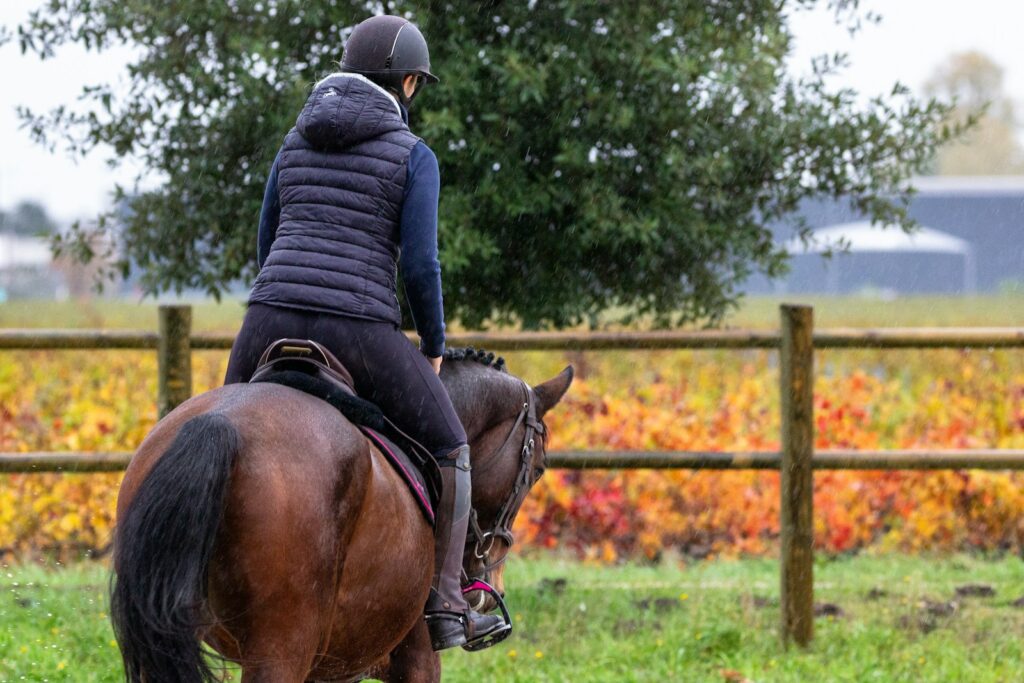
Balance in riding isn’t simply about not falling off—it’s about creating an independent seat that allows you to move in harmony with your horse. Good balance begins with proper alignment: ears, shoulders, hips, and heels should form a vertical line when viewed from the side. This alignment places your center of gravity directly over the horse’s, allowing for fluid communication between horse and rider. Many riders mistakenly confuse gripping with balance, when in fact tension in the legs or hands disrupts the true balance. Remember that balanced riding is dynamic, not static—you must make constant minor adjustments as your horse moves beneath you, much like the subtle shifts required when standing on a moving bus or train.
Developing Core Strength: The Foundation of Rider Balance
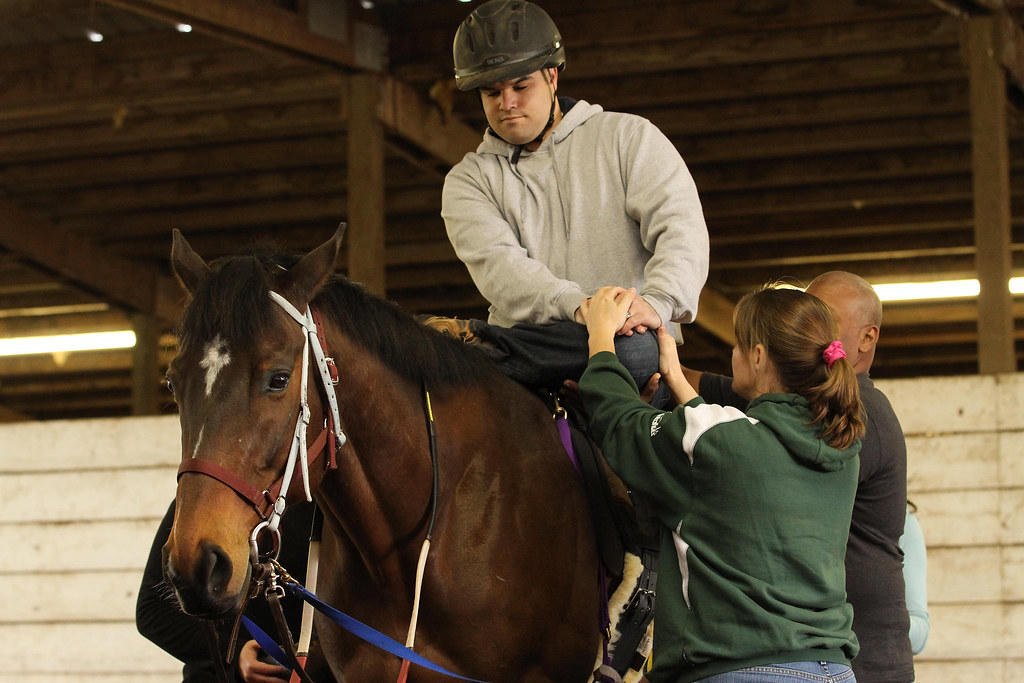
Your core muscles—abdominals, lower back, and hip stabilizers—form the foundation of riding balance. A strong core allows you to maintain your position without relying on your hands or gripping your legs. Regular off-horse exercises like planks, bridges, and Pilates can significantly improve your balance by strengthening these essential muscle groups. Many professional riders include specific core workouts in their training regimen, with some dedicating 20–30 minutes daily to these exercises. The benefits extend beyond just balance—a strong core reduces fatigue, prevents back pain, and allows for more precise aids, creating a virtuous cycle of improvement in your riding skills.
The Role of Proper Posture in Saddle Balance
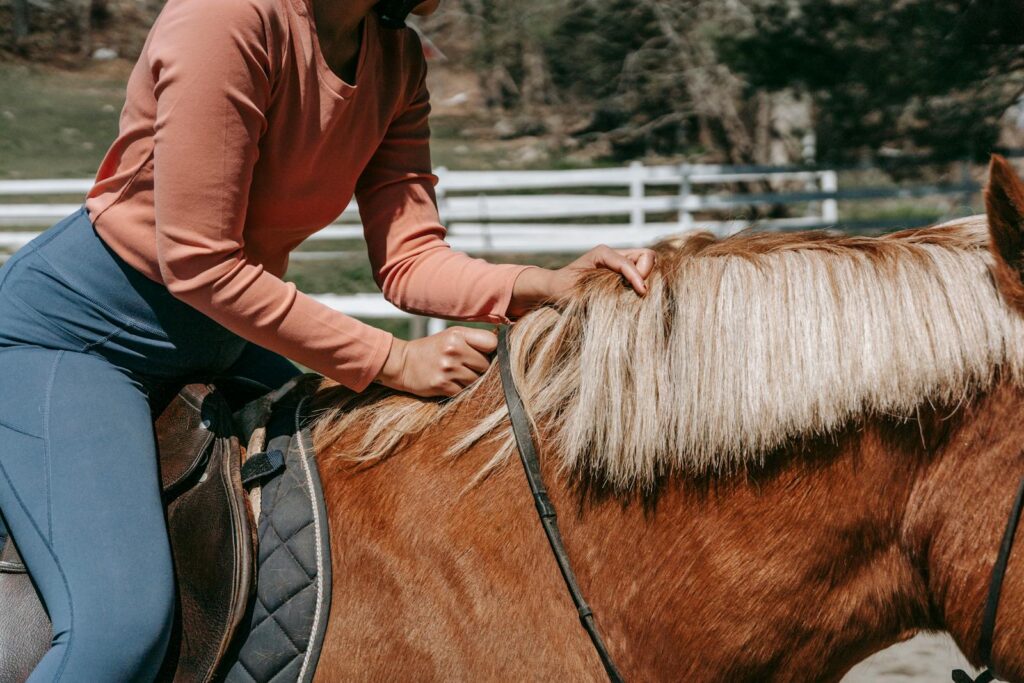
Your posture directly impacts your balance and ability to influence your horse. Sitting tall with your spine lengthened—imagining a string pulling you upward from the crown of your head—creates space for your pelvis to move naturally with the horse’s motion. Many riders inadvertently collapse their lower back or round their shoulders, shifting weight forward and compromising balance. Practicing awareness of your posture both on and off the horse, and catching yourself when you slouch in daily activities, helps develop better habits. Regular posture checks during your ride—mentally scanning from head to toe—will help solidify these habits until they become second nature.
Finding Your Seat Bones: The Key Contact Points
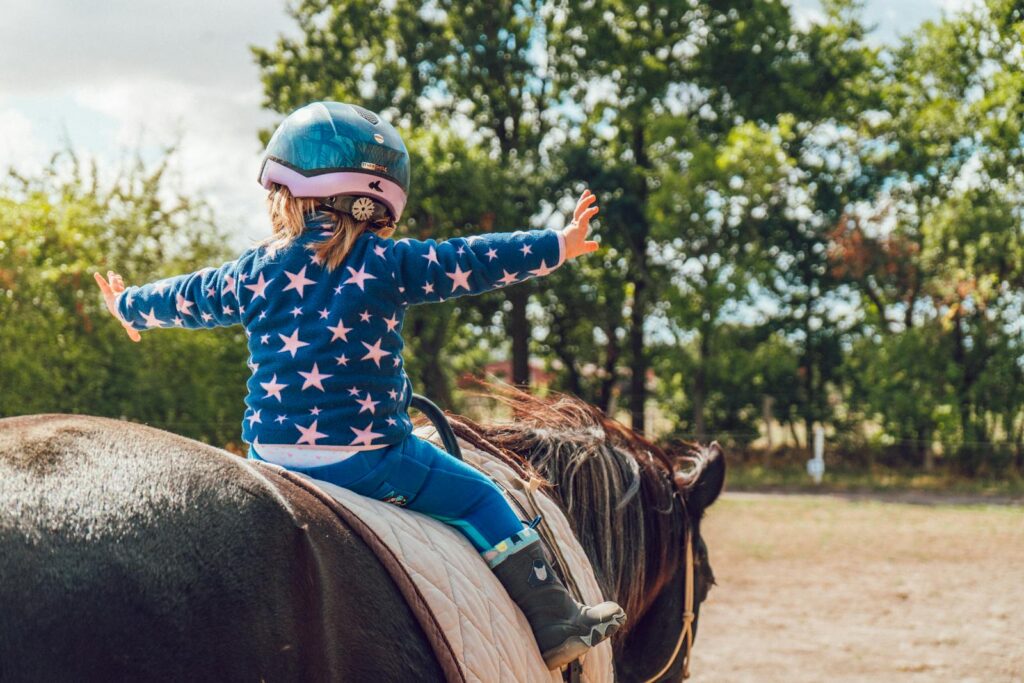
Your seat bones (ischial tuberosities) are the primary points of contact between you and your saddle, forming the foundation of balanced riding. Learning to feel and consciously position these bones is transformative. Try sitting on a hard chair and gently rocking forward and back to identify them. In the saddle, experiment with subtle weight shifts between your seat bones to observe how this affects your horse’s movement and your own stability. Many riders benefit from imagining their seat bones as the base of a triangle, with the pubic bone as the third point, creating a stable tripod for sitting. This awareness helps you use weight aids more effectively and maintain connection with your horse—even during complex movements.
The Importance of Relaxation for Better Balance
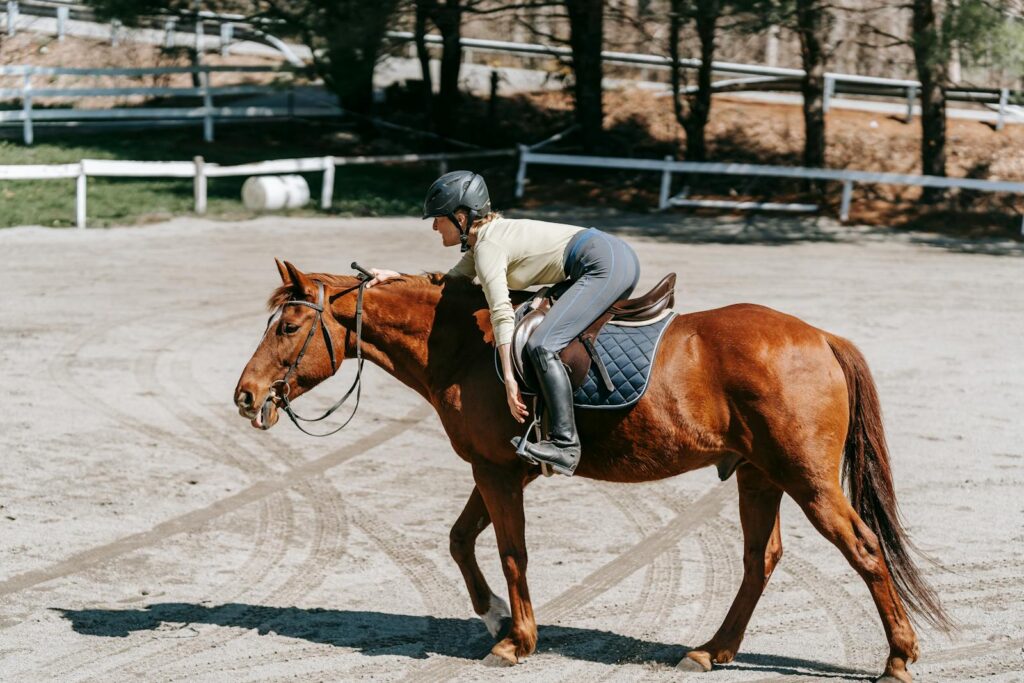
Paradoxically, tension is the enemy of good balance, yet many riders respond to balance challenges by tightening up. A tense rider bounces more, grips with the knees or thighs, and becomes less secure in the saddle. Conscious breathing exercises during your ride can dramatically improve relaxation—try inhaling for four strides and exhaling for four to establish rhythm and release tension. Physical cues like dropping your shoulders, softening your jaw, and loosening your grip on the reins signal to your body that it’s safe to relax. Many instructors recommend mental imagery—such as imagining your legs melting around your horse’s barrel or feeling like a wet blanket molding to your horse’s back—to promote the kind of relaxation that supports balanced riding.
No-Stirrup Work: Accelerating Balance Development
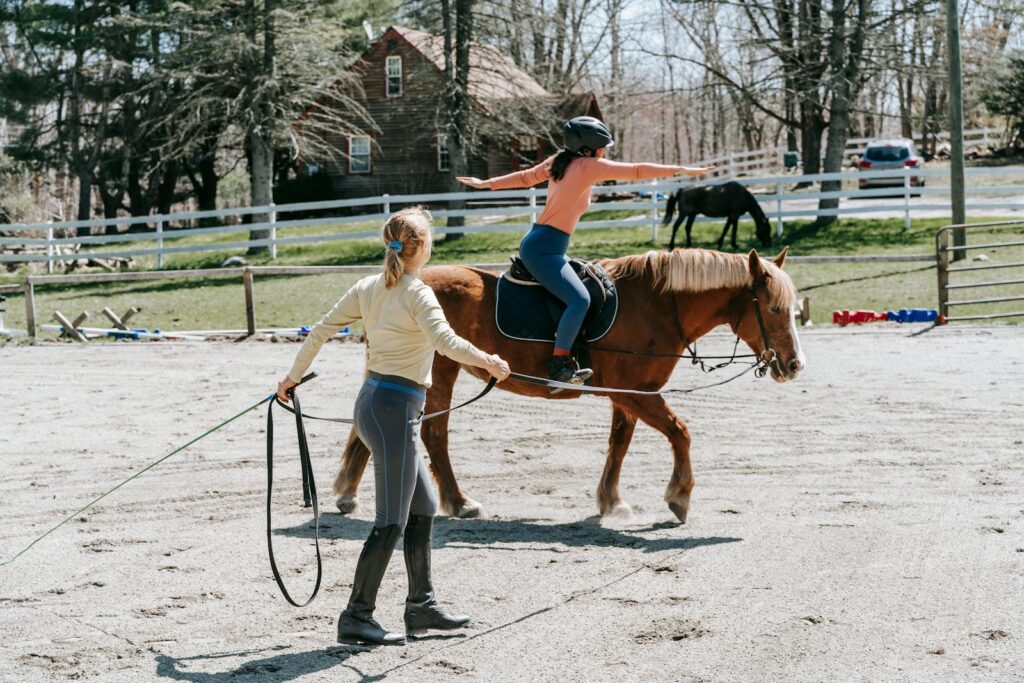
Riding without stirrups is one of the most effective ways to improve balance, helping develop the independent seat that characterizes skilled riders. Start with short no-stirrup sessions at the walk, gradually increasing duration and adding trot work as your confidence grows. Focus on maintaining your position without gripping with your knees or compensating with your hands. While “No-Stirrup November” is a popular challenge, incorporating just 5–10 minutes of stirrup-free riding into each session can yield lasting benefits. More advanced riders can practice transitions, circles, and even basic lateral work without stirrups to further refine their balance and independence.
Balance Exercises While Mounted
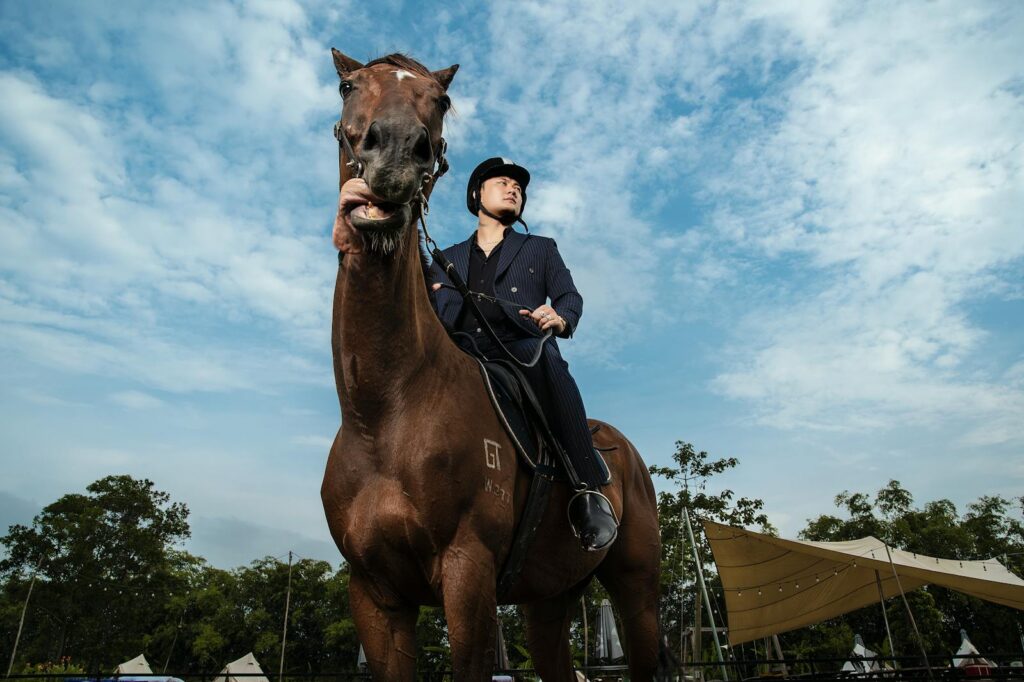
Mounted exercises can accelerate your balance development when practiced consistently. Arm circles while maintaining your position help isolate upper body movement from a stable lower body. Alternating hand placements—on your hips, shoulders, or reaching toward the sky—teaches independent arm movement without disturbing your seat. Advanced riders benefit from exercises like standing in the stirrups at different gaits or “around the world” (carefully rotating in the saddle to face various directions). These challenge exercises should always be done in a safe environment like a round pen or with a trusted handler, especially for newer riders still building balance.
The Influence of Different Riding Disciplines on Balance
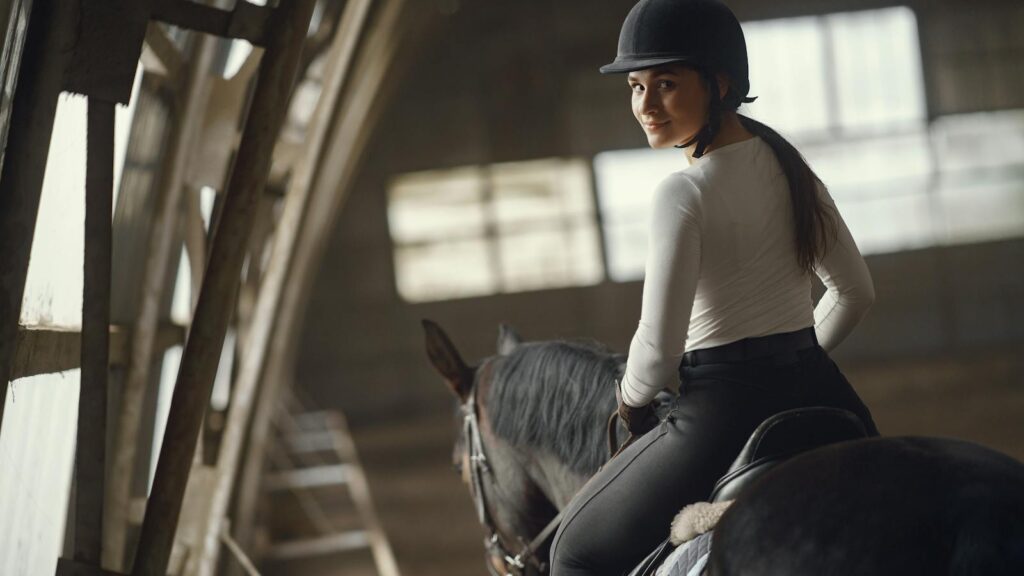
Each riding discipline emphasizes different aspects of balance. Dressage promotes vertical alignment with deep seat engagement, enabling riders to influence the horse through subtle shifts. Jumping requires a more forward position with the rider’s center of gravity slightly ahead of the motion to follow the horse’s arc. Western riding often features a “chair seat,” with feet slightly forward for stability during long work sessions. Cross-training in multiple disciplines improves your overall balance awareness and adaptability. Many accomplished riders incorporate elements from various disciplines to deepen their understanding of balance dynamics.
Equipment Considerations for Improved Balance
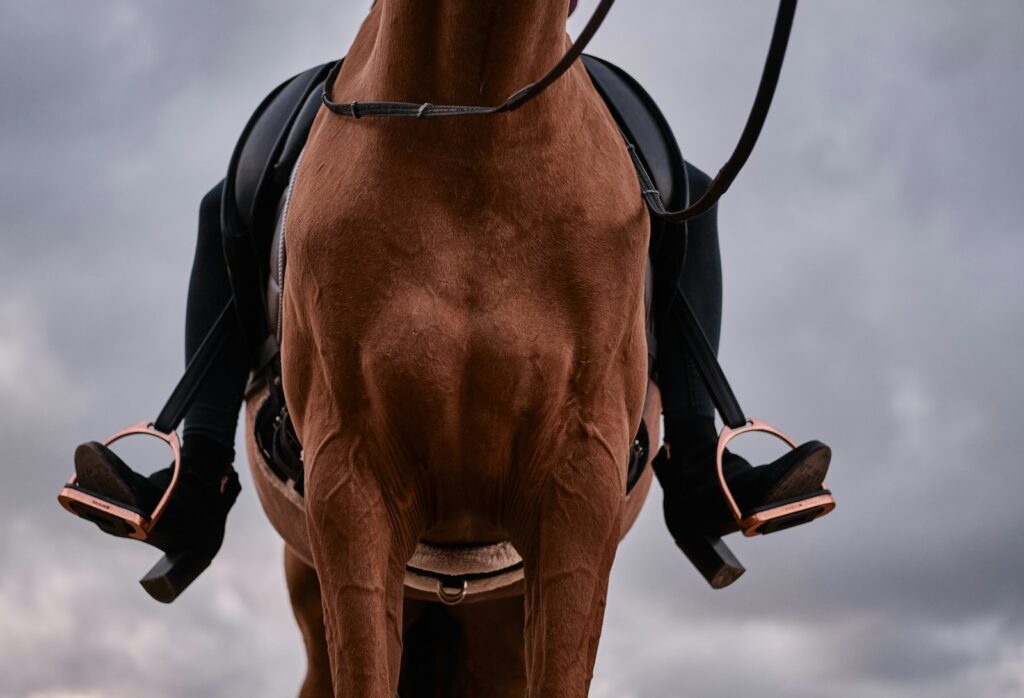
Your equipment plays a crucial role in your ability to balance effectively. A properly fitted saddle positions your seat bones correctly and allows your legs to hang naturally. For beginners, saddles with deeper seats can offer additional security while learning the fundamentals of balance. Stirrup length is equally important—too long and you’ll reach with your toes; too short and your knees will be pushed up, shifting your center of gravity. Safety stirrups with rubber bands or magnetic release systems provide peace of mind during balance exercises. While equipment can support balance, it’s no substitute for proper technique and physical conditioning.
Working with Different Gaits to Progress Your Balance
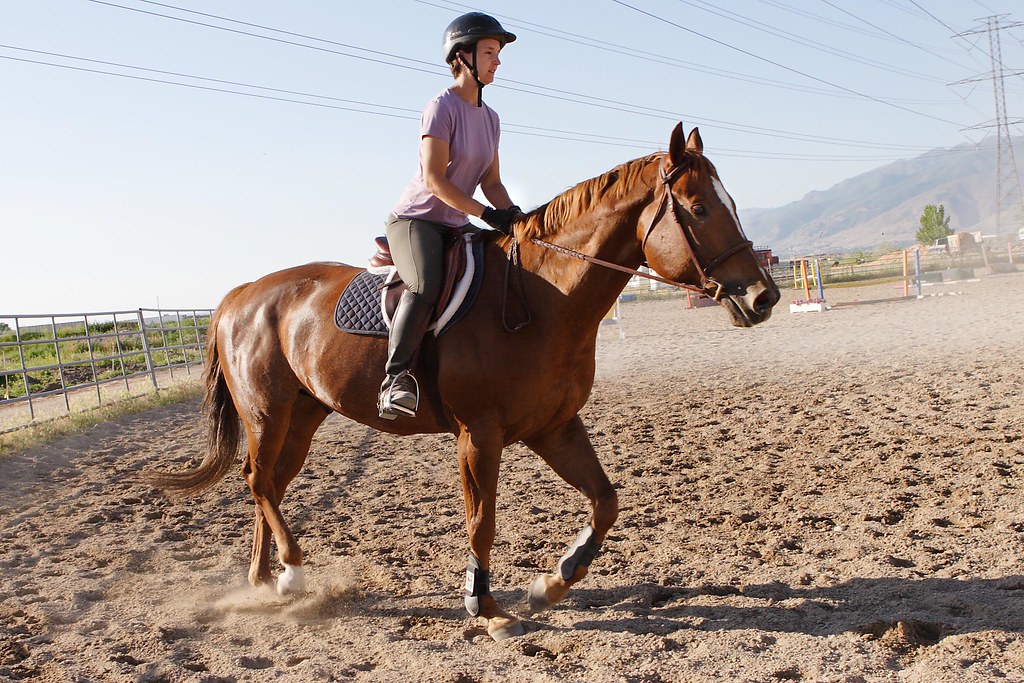
Methodically working through the gaits builds balance skills progressively from foundation to advanced levels. Walking provides the most stability for beginning balance work, allowing you to feel your seat bones and practice proper alignment without excessive motion. The posting trot challenges riders to maintain their center while rising and sitting rhythmically with the two-beat gait. Sitting trot represents perhaps the greatest balance challenge, requiring core strength and a deeply independent seat to absorb the horse’s movement. The canter, despite its speed, often feels more balanced to riders because of its natural rocking motion that, once properly followed, creates a harmonious partnership between horse and rider.
Using Groundwork to Supplement Mounted Balance Training
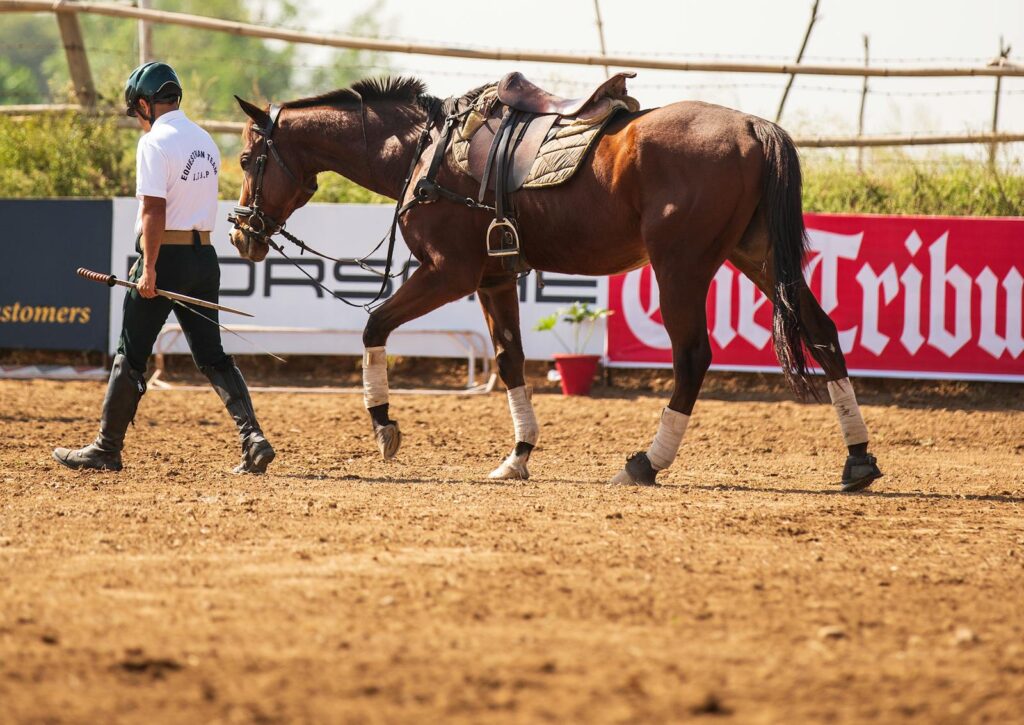
Balance development doesn’t always require time in the saddle—groundwork can be equally effective. Balance boards, stability discs, and exercise balls help build proprioception and core strength, which translate directly to riding. Yoga and Pilates programs tailored to equestrians target the muscle groups most involved in riding balance. Longe line lessons are another excellent supplement—an instructor manages the horse while you focus solely on your body position, often practicing without stirrups or reins. Separating these tasks allows you to refine balance without the added complexity of controlling your horse.
Troubleshooting Common Balance Issues
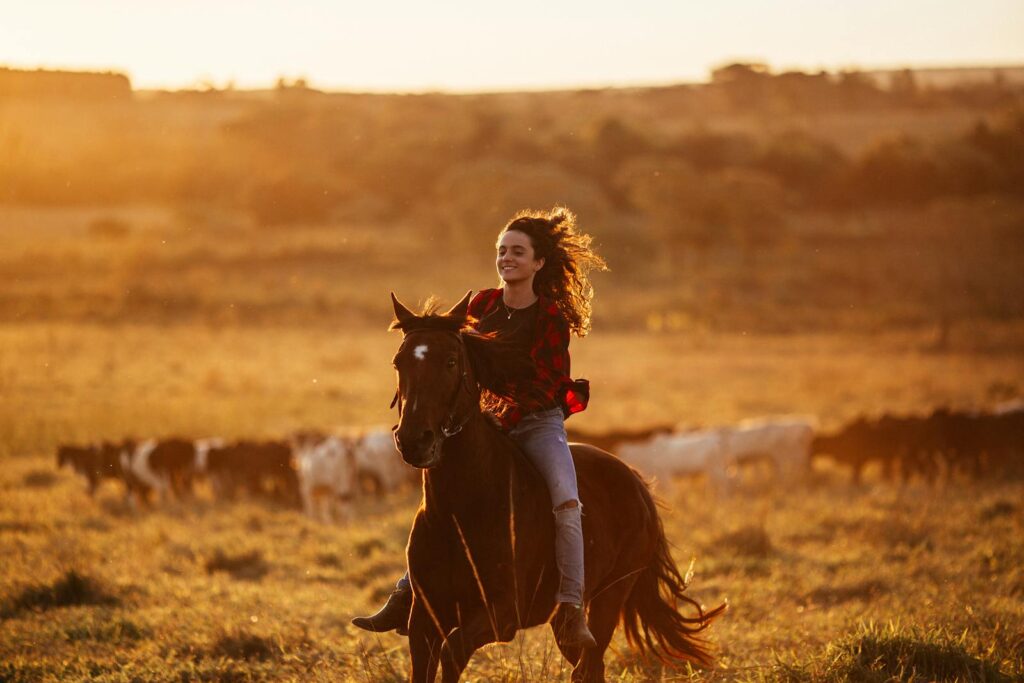
Identifying and correcting specific balance issues can accelerate your progress. Collapsing to one side often indicates a weaker core on that side, requiring targeted strengthening. If you tend to tip forward, focus on opening your hip angle and engaging your lower back. Looking down—another common habit—shifts your weight forward and disrupts balance; train yourself to look up by focusing on distant objects. Bouncing at the trot often stems from tension in the hip flexors or lower back; relaxing those areas allows your pelvis to follow the horse’s motion more fluidly. Video analysis can offer helpful feedback by revealing imbalances you might not notice while riding.
The Mental Aspects of Balance Development
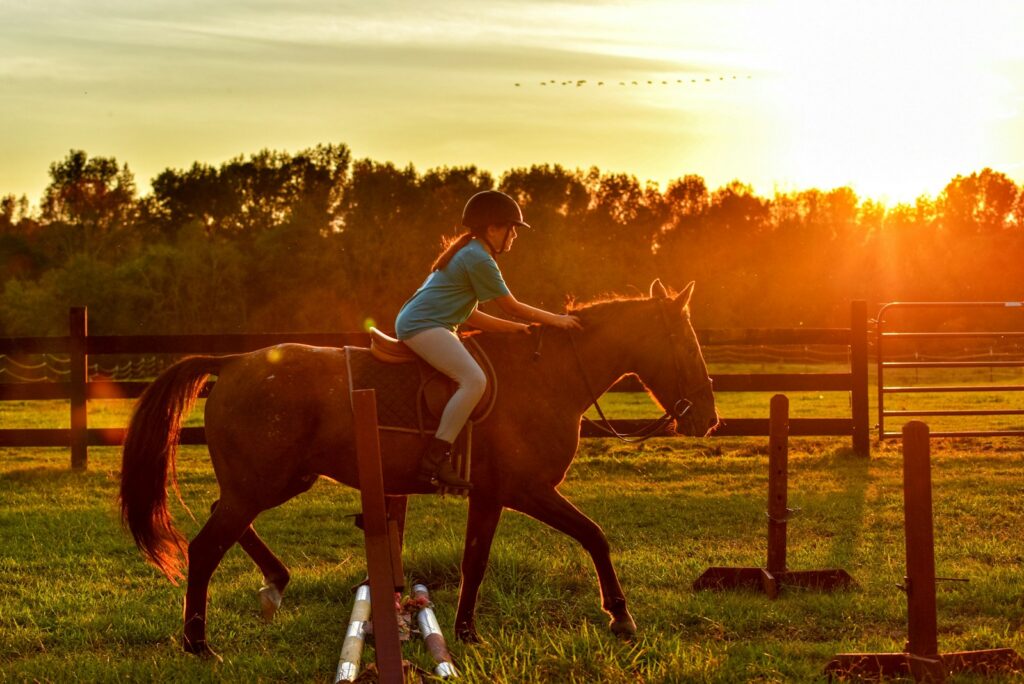
Improving balance is as much a mental process as it is physical. Visualization—mentally rehearsing balanced, fluid riding—prepares your body to follow suit. Mindfulness practices also enhance your awareness of body position and help develop the subtle control needed for balanced riding. Patience is key; meaningful improvement usually takes months of consistent work. Celebrate the small breakthroughs—those fleeting moments of perfect balance—because they build confidence, reduce tension, and reinforce the very skills you’re striving to master.
Developing superior balance in the saddle is a journey, not a destination. The skills outlined in this guide build upon one another to support advanced techniques across all riding disciplines. By combining physical conditioning, proper alignment, and consistent practice both in and out of the saddle, you’ll cultivate the independent seat that defines accomplished riders. Balance improvement is personal—embrace your learning curve while staying focused on these foundational principles. Your enhanced balance will elevate not only your riding experience but also your horse’s comfort, performance, and long-term well-being.

